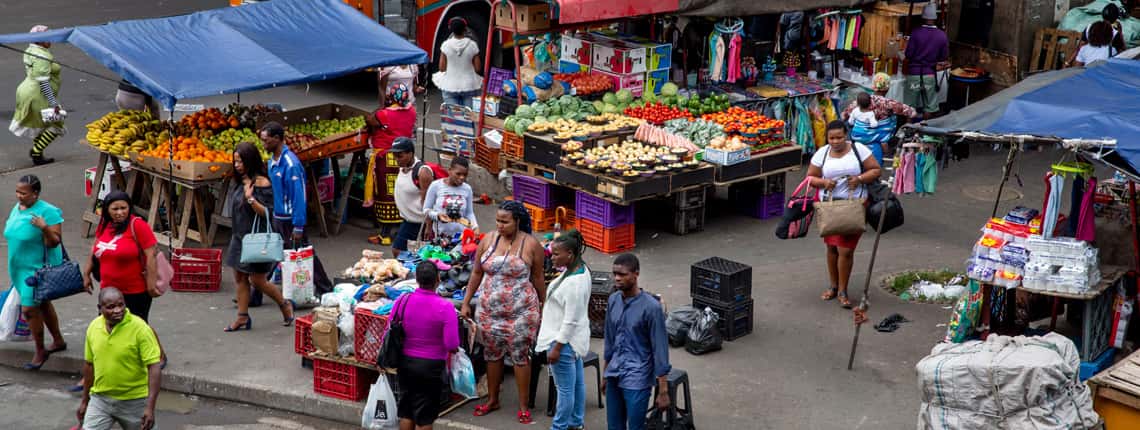Through a series of ambitious global commitments in recent years, governments across the world have signed on to build a more equitable and sustainable urban future.
Taken together, the 2030 Agenda for Sustainable Development (SDGs) and the New Urban Agenda (NUA) have put forth a vision of cities with vibrant public spaces, clean environments and robust civic participation. These are areas where cities are struggling, and governments, academics and other stakeholders have debated at length on how best to approach implementation and monitoring.
But many of the solutions already exist at the grassroots — and governments should take note.
Organizations of informal workers and allies have been hard at work trying to put these standards into practice by themselves. For example, in three of WIEGO’s Focal Cities — Accra, Ghana; Mexico City, Mexico; and Delhi, India — grassroots movements have been proposing groundbreaking new models for regulating work in public space, managing waste collection, and engaging citizens in master planning. Here we will show how governments in these cities could partner with worker organizations to demonstrate real and measured progress on the multiple goals contained within the SDGs and the post-2015 agenda.
Three Grassroots Models for Reaching Global Goals
Global Commitments, Principle 1: Inclusive, accessible public spaces
Grassroots Model in Mexico City: Create frameworks that regulate work in public space in a way that eliminates discrimination and expands protection and that is designed with the input of informal workers themselves.
Both the Sustainable Development Goals (SDG 11 focused on better cities) and the New Urban Agenda commit governments to promoting inclusive and accessible public spaces. The New Urban Agenda defines these as “multi-functional areas for social interaction and inclusion, human health and well-being, economic exchange and cultural expression and dialogue among a wide diversity of people and cultures.”
Creating inclusive public spaces means finding a way to balance the needs of multiple users — from street vendors to cyclists and pedestrians. However, since these commitments were made in many cities, public spaces have become more rather than less exclusionary for informal workers, with street vendor evictions on the rise globally.
Achieving key development targets means that governments must first commit themselves to rejecting a policy of evictions under any circumstances. Evictions are often not only a violation of workers’ rights but also highly ineffective and economically destructive.
Second, for any real, sustainable change to happen, governments must work together with informal workers’ organizations to come up with new, innovative models for regulating access to public space. Where governments have not taken action to do so, some organizations of informal workers are moving ahead on their own.
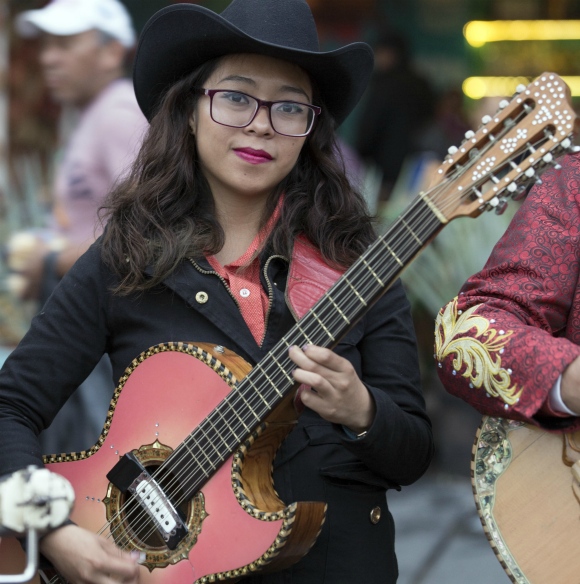
Mexico City’s informal workers in public space draft new regulations
In Mexico City a group of diverse workers who all earn their living in public space — musicians, shoe shiners, artisans, magazine vendors — have faced many obstacles, including barriers to obtaining licences and evictions. They decided to take matters into their own hands and propose their ideas on a way forward.
Leaders from each of these groups recently came together to re-draft the existing regulation that governs their work (what is defined in Mexico as non-salaried work). Over the course of a year, with support from Focal Cities Mexico, they created a new proposed regulation (see the full document here, in Spanish) founded on two principles: non-discrimination and social protection.
Principle #1: Non-discrimination
Under the principle of non-discrimination, the workers propose expanding access to public space, simplifying the process of obtaining and transferring licenses (and eliminating discriminatory disqualifiers, including illiteracy and previous criminal record), recognizing natural markets as areas of work and involving organizations of informal workers in the process of determining dedicated zones for work spaces.
Achieving key development targets means that governments must first commit themselves to rejecting a policy of evictions under any circumstances.
Read how shoe shiners in one Mexico City neighbourhood fought their displacement.
Principle #2: Social protection
For the second principle focusing on social protection, they propose health and child care provisions for non-salaried workers, and certain maternity and social security benefits. Informal workers face many challenges in accessing basic social protections, especially women.
Read about informal workers’ childcare needs and demands.
Adding these two principles to the revised regulation establishes that regulation for informal work in public space is needed, but it should be fair, transparent and developed in a way that responds to the realities of informal workers and that is supportive of their livelihoods. This idea aligns with the SDGs and NUA, but it also provides a specific response to the International Labour Organisation Recommendation 204’s — the guiding instrument for formalizing the informal economy — call for governments to provide regulated access to public space.
Read about how a street vendor used Recommendation 204 to change policy in Costa Rica.
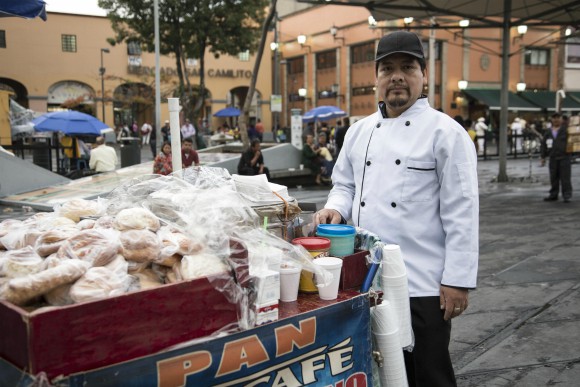
Workers Await Government Response
Informal worker representatives launched their proposal in Mexico City in April, but have yet to hear from the government about when they can present their proposal in the “parlamento a la calle,” a participatory process that the city congress has committed to carrying out to get citizen input on the regulatory reform.
If public officials in Mexico City are serious about Mexico’s commitment to the SDGs and NUA and to the progressive principles of inclusion in their new city constitution, they must engage non-salaried workers about their ideas for more inclusive and effective regulation of public space.
Global Commitments, Principle 2: Environmental sustainability
Grassroots Model in Accra: Improve recycling rates and reduce poverty through integrating waste pickers into solid waste management systems
The NUA and SDGs (SDG 6 focused on water and sanitation) commit governments to promoting clean and healthy environments through proper waste management. The NUA states an additional commitment to “reducing, reusing and recycling waste, minimizing landfills.”
It is well documented that waste pickers are waste management experts, sometimes the sole source of recycling services in cities across the Global South and even in the Global North.
However, they are also some of the most marginalized and vulnerable workers, providing environmental services without service contracts or legal or social protections. To fight collectively for these rights and recognition, waste pickers are organizing — through associations on open dumps and landfills, through cooperatives, across regions and even internationally.
Although gains have been made in some contexts, waste pickers across regions are facing new, unprecedented threats to their livelihoods through the introduction of new technology and the modernization of waste management systems. Some of these technologies, such as waste-to-energy pyrolysis and bio-degradable plastic additives, are billed as “green solutions” to the waste problem when they actually make the problem worse.
The logic behind the SDGs is to implement them in a coordinated way, with the NUA providing a framework for their implementation in cities. By promoting waste pickers’ livelihoods, rather than the technologies that displace them, governments have an opportunity to work towards both poverty reduction and environmental goals.
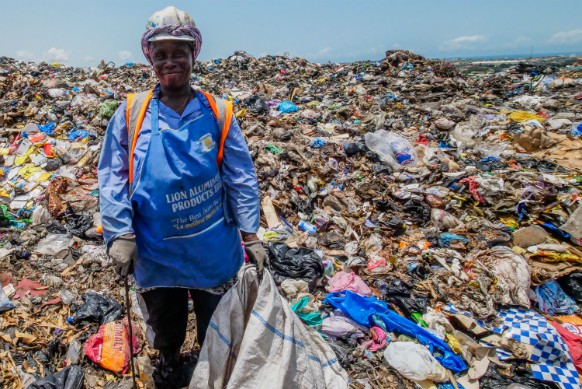
Ghana’s Waste Pickers are Key Players in Reducing Plastics
In Accra, Ghana, policymakers have recently taken unprecedented steps to reduce plastics pollution: the President has committed to making Accra the cleanest city in Africa, and a new national plastics policy is in development.
But these bold steps will miss the mark if the Ghanaian government fails to harness the expertise and skills of the informal waste pickers who are already on the frontlines of plastic waste recycling.
But these bold steps will miss the mark if the Ghanaian government fails to harness the expertise and skills of the informal waste pickers who are already on the frontlines of plastic waste recycling.
Accra’s recycling rate is estimated to be 5 per cent, and of this, private companies are only recovering 0.5 per cent, with the vast majority being recovered by informal waste pickers.* In other words, waste pickers are recycling pioneers in the midst of the city’s plastics waste crisis, and are key to meeting Accra’s environmental goals.
Read about how waste pickers are helping to solve the ocean plastic crisis.
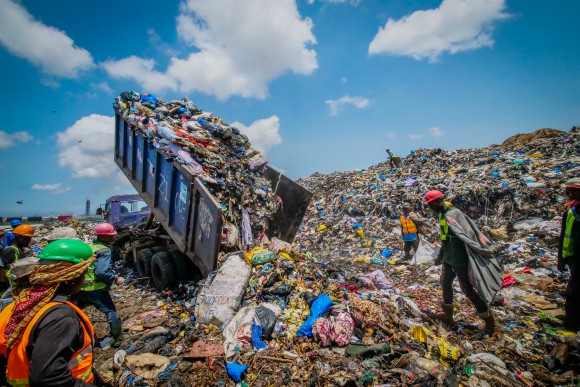
Mobilizing to Gain Recognition in Waste Management Policies
Waste pickers at Kpone, Accra’s largest landfill, are already mobilizing with the support of WIEGO’s Accra Focal City programme to build a proposal for their integration into the solid waste management system. In the process they are networking with other waste picker groups in Accra, with the intention of building a city-wide movement.
By recognizing that waste pickers are already experts on recycling and waste management, and by harnessing their knowledge and experience through integrating them formally into the solid waste management system, the government could take a huge step towards both environmental protection and poverty alleviation goals to benefit some of the country’s most vulnerable workers.
This week, it was announced that the draft national plastics policy had been sent to parliament for approval. The Ghana parliament should demonstrate their commitment to the NUA and SDGs, and invite waste picker representatives in Accra to provide commentary and input on the draft plastics policy before it is finalized, and they should be considered as stakeholders in the implementation of the policy once it is approved.
Global Standards, Principle 3: Robust Civic Participation
Grassroots Model in Delhi: Organizations of Informal Workers, Community Groups and Allies Join Hands in Delhi to Articulate a Master Plan for the People
The SDGs Target 11.3 states a commitment to “enhance inclusive and sustainable urbanization and capacity for participatory, integrated and sustainable settlement, planning and management.” This commitment is also reflected in the New Urban Agenda in the context of cities.
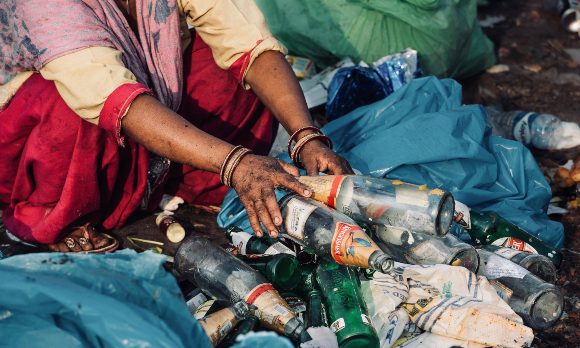
Putting excluded communities on the map in Delhi
A grassroots coalition is creating their own map in Delhi. Rather than wait for the Delhi city government to open a participatory process for the 2021-2041 Delhi Master Plan, a cross-sector coalition of livelihood groups, housing groups, and allies have come together with the support of WIEGO’s Focal City Delhi to organize a “people’s plan.”
The coalition has been gaining in numbers and strength over the past year, and has plans this year to begin building a broad-based grassroots movement to push for the people of Delhi, and especially the most marginalized, to have a voice in the planning process.
While master planning has been used in many cities, including Indian cities, as a blunt tool for exclusion, the master planning coalition hopes to turn the “power of the plan” on its head. The key aim of the coalition is to increase the visibility of workers and communities that have long been rendered invisible by maps and plans in India’s capital city.
For example, through the creation of a set of resources, including a visual “People’s Atlas,” the coalition aims to show that the informal and the “unplanned” is the norm in Delhi, rather than the other way around. More than 70 per cent of people live in unplanned settlements and over 85 per cent are in informal employment, making their integration into planning mechanisms critically important.
Read about how women informal workers’ in Delhi spoke out for their needs.
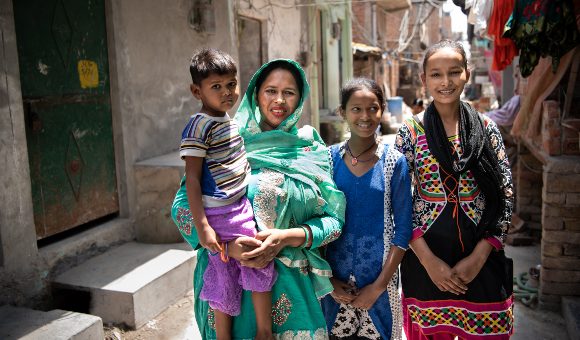
Imagining a future city for the people, not just profit
The coalition is also planning extensive community meetings to engage diverse neighbourhoods in imagining the future city they want to see. The group has a preliminary policy agenda, which includes a no-evictions policy, the reservation of affordable land and housing, and the designation of safe and secure places of work for informal workers.
The coalition is also pushing for expanded civic participation, not just in the process of developing the master plan, but also in advocating for a decentralized structure that would lay the groundwork for the participatory development of smaller-scale, area-level plans to follow. This requires the master plan to be a flexible document that can accommodate local decision-making processes.
When it comes time to begin the development of the 2021-2041 Delhi Master Plan, the National Institute of Urban Affairs and the Delhi government will have a huge asset in the Delhi Master Plan coalition, if they choose to take advantage of it.
For example, the Solid Waste Management Rules (2016) outline a decentralized waste management structure that can benefit waste pickers, but only if the Master Plan leaves scope for municipalities to determine neighbourhood-level land allocation. Similarly, the Street Vendor Act (2014) delegates the power of allocating space for vending zones to town vending committees (TVCs — which are multi-stakeholder bodies including street vendor representatives). But for TVCs to be effective, the master plan must accommodate changes in zoning or space allocation that would follow from their decisions.
Through the master plan coalition, an agenda for the two faces of informality outlined in the NUA — settlements and livelihoods — is coming together through strategic grassroots partnerships. When it comes time to begin the development of the 2021-2041 Delhi Master Plan, the National Institute of Urban Affairs and the Delhi government will have a huge asset in the Delhi Master Plan coalition, if they choose to take advantage of it.
Governments must listen to those most affected to realize sustainable change
For progress on global commitments to be meaningful and effective, advances must improve the lives and livelihoods of those who are most acutely suffering from current models of unsustainable urbanization and economic growth. This includes informal workers, who make up the majority — 61 per cent of the world’s workers — as well as those who reside in informal settlements.
These groups know better than anyone how to address the systemic inequities they experience in their daily lives. Governments cannot meet the SDG targets without engaging the knowledge and experiences of these communities towards the creation of solutions that are grounded in their lived experiences.
These groups know better than anyone how to address the systemic inequities they experience in their daily lives.
As we have shown here, organizations of informal workers and allies in three cities aren’t waiting to be consulted. They are ready with proposals for new models of regulating work in public space, reducing waste and poverty, and participating in the planning of the future city they want to see. The impetus is on governments now to open up spaces for dialogue, exchange and negotiation with informal workers and other grassroots groups — not only in these three cities but in every city — to reach agreement on mutually beneficial solutions.
Read more about grassroots-driven progress in WIEGO’s focal cities.
Feature photo: Street Vendors South Africa. Photo credit: Jonathan Torgovnik
* See Kwaku Appiah-Oduro 2017 and Ghana Plastics Policy Zero Draft (2018).
